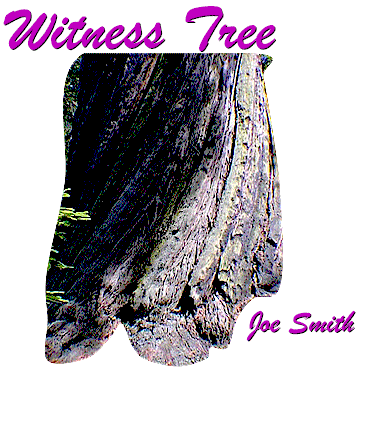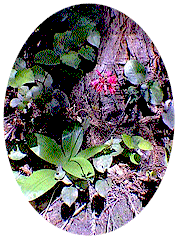|
||
Some first-growth redwoods up here on the North Coast were spared during early logging operations because they were convenient markers for the corner boundaries of various land sections. Witness trees, they’re called, these mute sentinels of various real estate holdings. |
||
| One of the old giants, scarred by lightning, enough lumber in it to build a new, wooden St. Peter’s, stands above a ravine on the ranch where I work. The top is missing. Could be it was shaken off in the big earthquake of 1906. Centered in the sea off the nearby town of Point Arena, the seismic trembling which set San Francisco ablaze also caused many whiplash injuries in the forest. Could be high winds snapped the top in some storm, only the tree is still around to remember. Or maybe the lightning bolt itself decapitated the redwood. A burn mark, a deep gash, spirals up the twisted trunk. | ||
| The scar is another reason the witness tree wasn’t taken. Back in the time when it might take two men a week of pushing a bucksaw back and forth to topple an ancient redwood, loggers wouldn’t bother with gnarly trees like this, whose wood might be damaged, practically useless. Philosophers might consider this an excellent illustration of the Taoist principle that the best way to survive is to make yourself useless. | ||
| Red-tailed hawks riding the thermals rising up the ravine shriek in the sky alongside the witness tree. An owl resides in its branches, about half-way up. It startled me as I was walking down a path fresh with the minty scent of pennyroyal one day -- a blur, a flap, a screech much like the screech that wings through my bedroom window at night. The screech often comes just before a small cry, cut short. Then silence, crashing in waves against the house. | ||
| Around the base of the tree I find the owl’s prey, puzzles of tiny bones and half-digested mice coated with vomit. Coughballs is the term naturalists use for these leavings of a raptor’s supper. They’re polite people, naturalists. Apparently most owls dine with the table manners of ancient Romans. | ||
| You’d think it would make you feel sort of lost, a tree that was growing here, right here, when Julius Caesar celebrated some victory with a banquet. Instead, things come closer, clearer, as if the sunlight filtered through its canopy of leaves could only trouble to glance upon what is real, what really matters. | ||
| Too close. The green needles flashing high above are nourished on needles like themselves that fell. The tree lives in its own graveyard, feeds on its own death, dies into itself with its own dark, monotonous rhythm. | ||
| I stand beside the redwood and my body begins rocking. Deep inside myself I hear the noise my fingers make while I’m asleep, dreaming maybe, fingers weaving shirts of flame, testing the wind, playing the hollow shin bone of a reptile which taught birds the secret of flight and then vanished, fingers burning on the rope we clutch, swinging out over the abyss. | ||
| My grandfather comes to mind while I’m standing beside this redwood I’ve heard people call the witness tree. Suddenly I understand why he used to rock back and forth so slowly out on the front porch, why he refused to go anywhere without a flask of whiskey in his hip pocket. | ||
|

